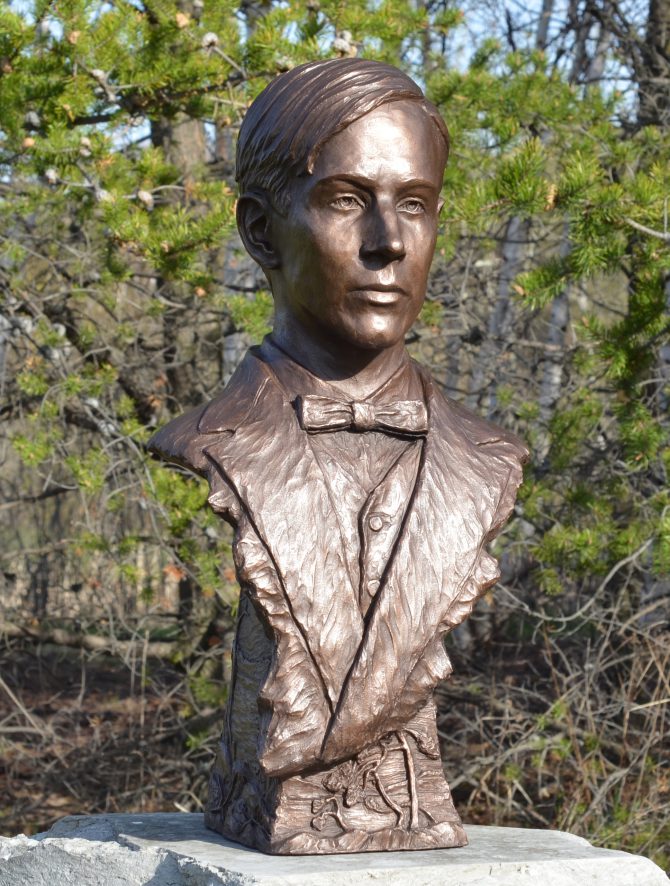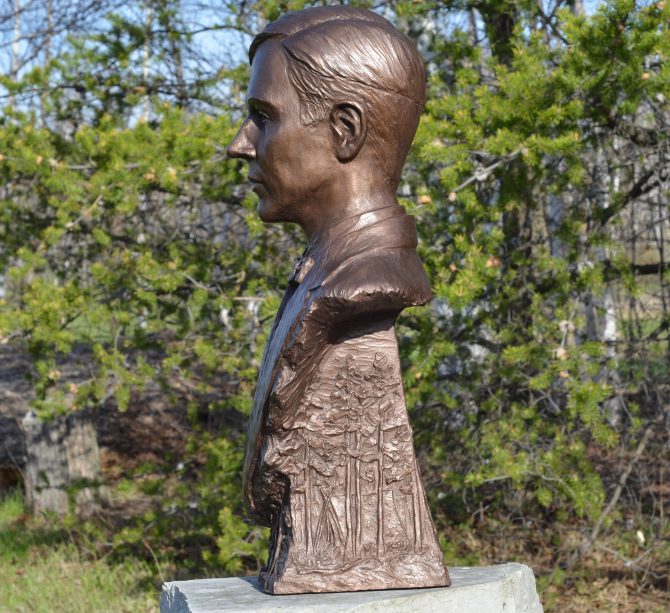SUDBURY, Ontario – After an overturned canoe pointed to tragedy, Tom Thomson’s body was found on July 8, 1917, in Canoe Lake, Algonquin Park. To this day, no one knows what happened to one of Canada’s greatest painters. This summer, the 100th anniversary of Thomson’s death, Sudbury-based sculptor Tyler Fauvelle presents “Into the Wind”, an artwork honouring Thomson and his powerful wilderness paintings. The commemoration is a limited edition work, sculpted in clay and cast in a metal-infused medium developed by Fauvelle. The first two castings of the edition are on display at the Perivale Art Gallery, Manitoulin Island, Ontario, and at the Partners Hall Art Exhibit, Huntsville, Ontario. “Into the Wind” will also be shown later this summer, during the Festival of the Sound, at the Charles W. Stockey Centre for the Performing Arts, Parry Sound, Ontario.

The commemorative bust features sculpted reliefs on the base, interpreting scenes from four of Thomson’s paintings, suggesting his too-brief artistic journey. The relief at the front of the base evokes Thomson’s iconic “The West Wind”, (Winter 1916-17), chosen by Fauvelle as a signpost of what could have been. Another relief interprets “Northern Lights” (Spring 1917), one of Thomson’s final works. “Thomson’s life was divided between the man-made city, and the natural world. Although my sculpture shows an urbane figure in period clothes, the reliefs around the base reveal that his heart belonged to the wilderness.”

Canadian nationalism was in the wind. Thomson, along with some friends who would eventually form the Group of Seven after his death, broke with tradition. They painted the true story of Ontario’s wilderness, in all its power, colour, and rugged reality. “I grew up camping and fishing in Northern Ontario. I’ve seen the natural world Thomson expressed so honestly with his art,” says Fauvelle. “Thomson died young, but the spirit he revealed in paint is immortal.”
Sculpture by Tyler Fauvelle
Photo: Sculpture by Tyler Fauvelle
